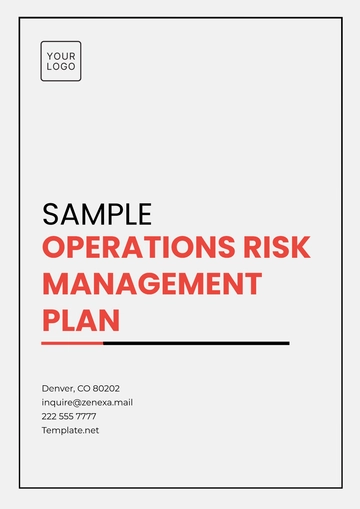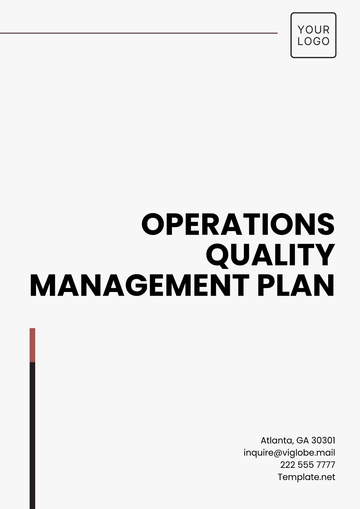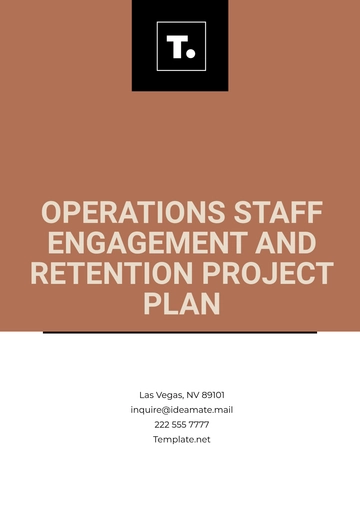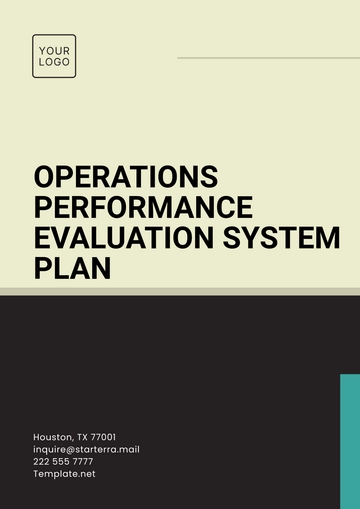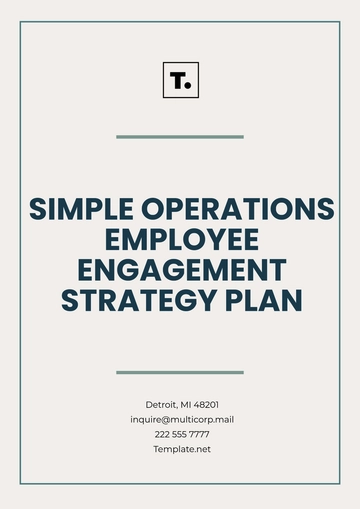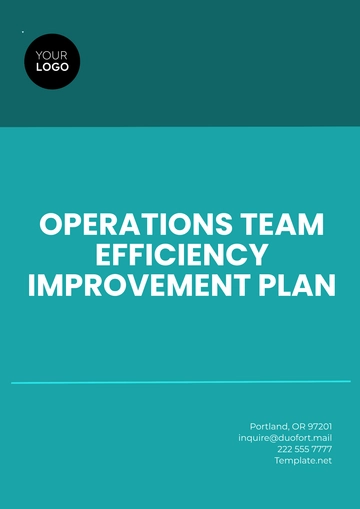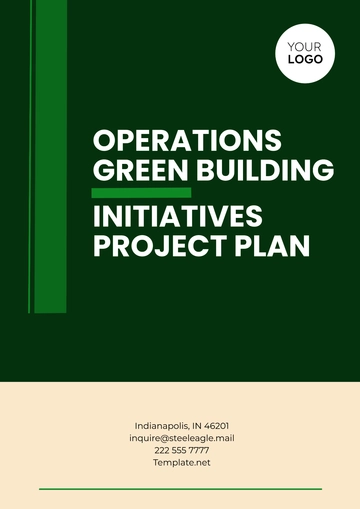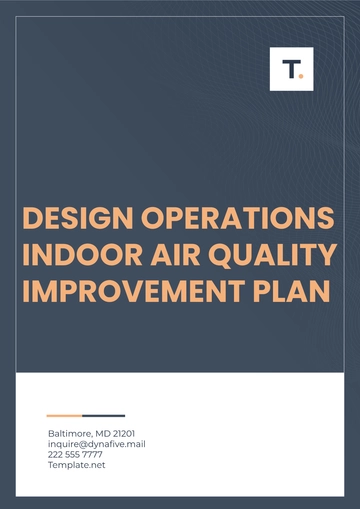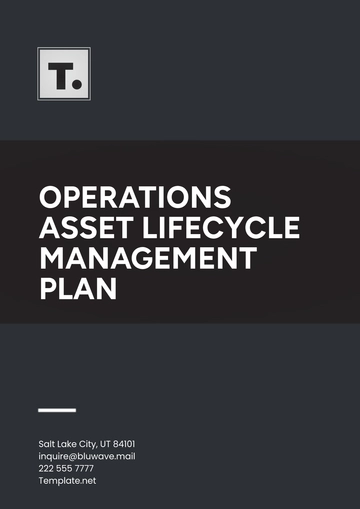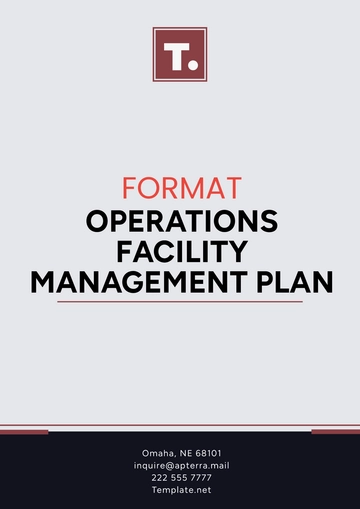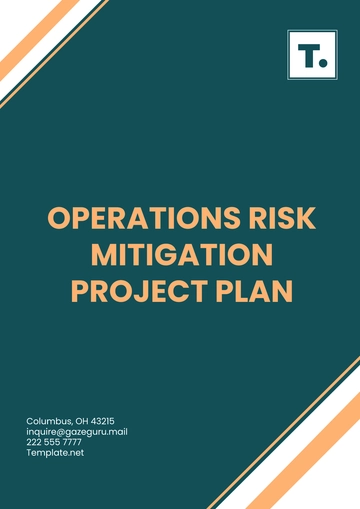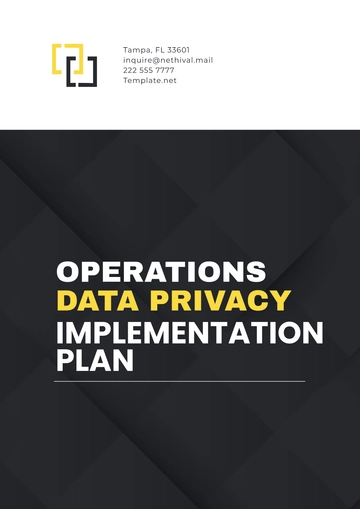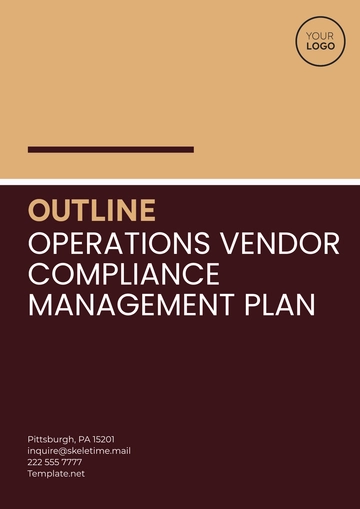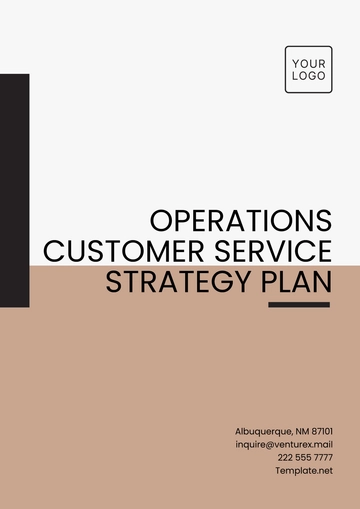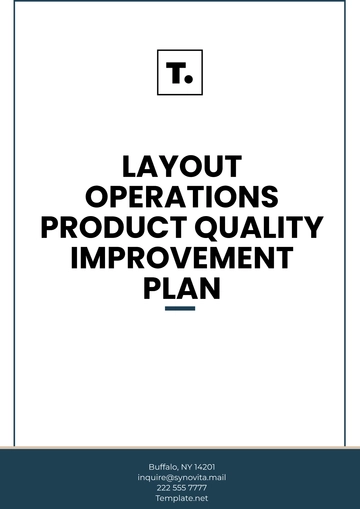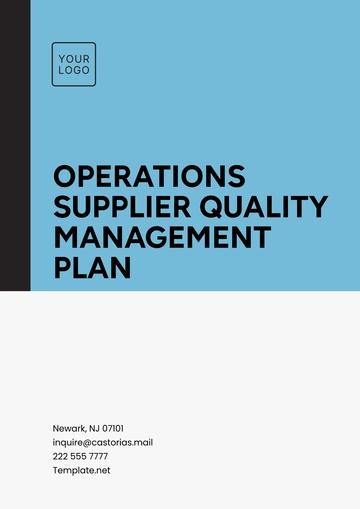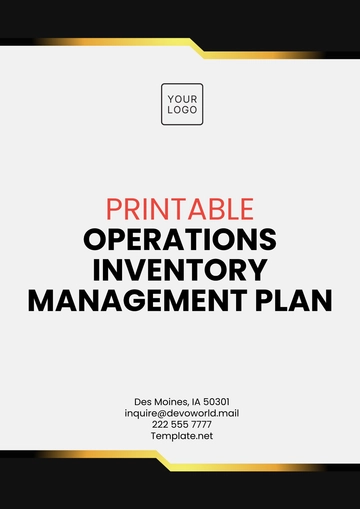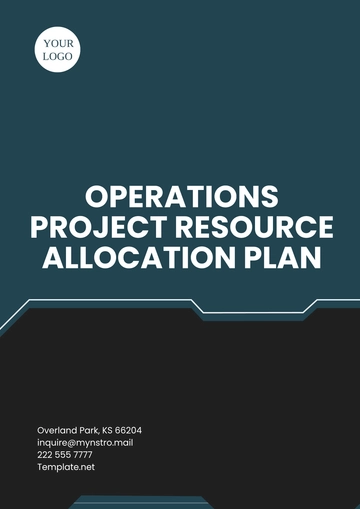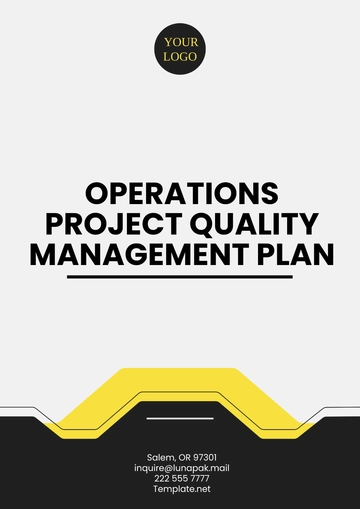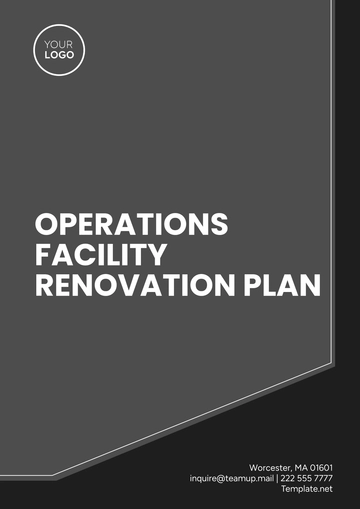Free Workplace Waste Management Plan
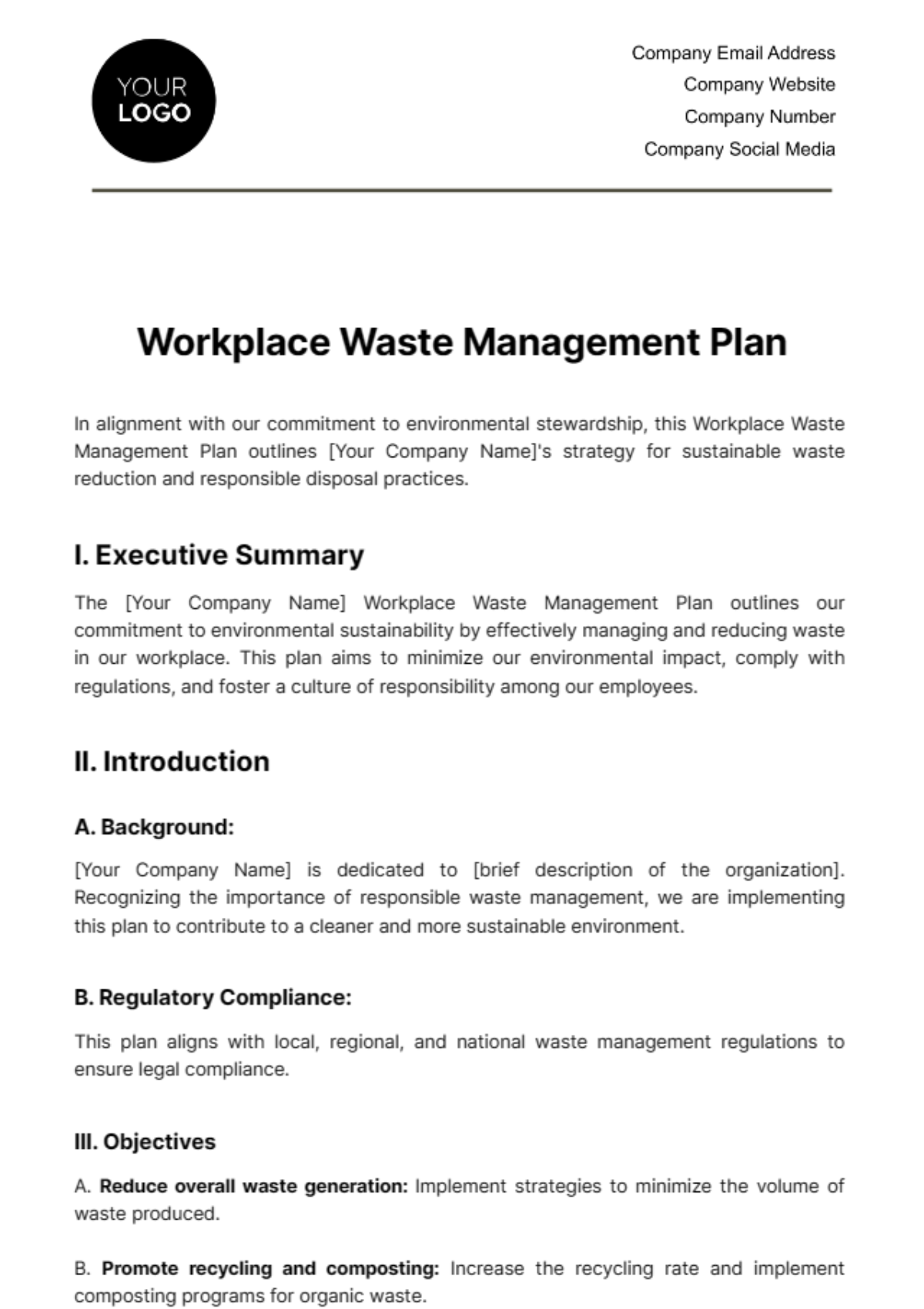
In alignment with our commitment to environmental stewardship, this Workplace Waste Management Plan outlines [Your Company Name]'s strategy for sustainable waste reduction and responsible disposal practices.
I. Executive Summary
The [Your Company Name] Workplace Waste Management Plan outlines our commitment to environmental sustainability by effectively managing and reducing waste in our workplace. This plan aims to minimize our environmental impact, comply with regulations, and foster a culture of responsibility among our employees.
II. Introduction
A. Background:
[Your Company Name] is dedicated to [brief description of the organization]. Recognizing the importance of responsible waste management, we are implementing this plan to contribute to a cleaner and more sustainable environment.
B. Regulatory Compliance:
This plan aligns with local, regional, and national waste management regulations to ensure legal compliance.
III. Objectives
A. Reduce overall waste generation: Implement strategies to minimize the volume of waste produced.
B. Promote recycling and composting: Increase the recycling rate and implement composting programs for organic waste.
C. Educate and engage employees: Foster a culture of sustainability through employee training and awareness programs.
IV. Stakeholder Involvement:
A. Environmental Officer:
[Name and contact information]
B. Facility Management Team:
[Names and contact information]
C. Employee Representatives:
[Names and contact information]
D. Regulatory Compliance Expert:
[Name and contact information]
V. Waste Assessment
A. Types of Waste:
Recyclables: Paper, plastic, metal, glass
Organic Waste: Food scraps, yard waste
Non-Recyclables: General waste
B. Quantification:
Recyclables: [Specify volume or weight]
Organic Waste: [Specify volume or weight]
Non-Recyclables: [Specify volume or weight]
VI. Waste Reduction Strategies
Source reduction: Encourage digital documentation and promote reusable materials.
Zero-waste mindset: Conduct employee training and awareness campaigns.
Composting and recycling programs: Implement systems for organic and recyclable materials.
Sustainable procurement: Prioritize environmentally friendly products and packaging.
Reusable containers: Encourage their use and provide designated waste sorting stations.
Continuous improvement: Regularly assess and revise waste reduction initiatives for better efficiency and compliance.
VII. Source Separation
Source separation aims to categorize waste materials into specific groups at their origin to facilitate efficient recycling, composting, or proper disposal.
A. Benefits:
Enhanced Recycling: Separating waste at its source ensures better quality recyclable materials, increasing their value and potential for reuse.
Reduced Contamination: By segregating waste types, it minimizes contamination, making recycling and composting processes more effective.
Proper separation can lower waste management costs by optimizing recycling efforts and reducing landfill-bound waste.
B. Practices
Education and Training: Inform and train employees on the importance and methods of source separation.
Designated Containers: Provide clearly labeled bins for different waste streams (e.g., paper, plastic, organic waste).
Regular Monitoring: Ensure consistent adherence to separation practices through periodic checks and audits.
Feedback and Improvement: Gather feedback from employees to improve the source separation system continually.
C. Practices
Education and Training: Inform and train employees on the importance and methods of source separation.
Designated Containers: Provide clearly labeled bins for different waste streams (e.g., paper, plastic, organic waste).
Regular Monitoring: Ensure consistent adherence to separation practices through periodic checks and audits.
Feedback and Improvement: Gather feedback from employees to improve the source separation system continually
VIII. Recycling Programs
At our company, we've instituted robust recycling programs by establishing clear guidelines for material sorting and bin labeling. We prioritize ongoing employee education, ensuring everyone stays updated on accepted recyclables. Collaborating closely with waste management partners, we guarantee seamless collection, transportation, and processing of recyclable materials. Through regular audits, we fine-tune our recycling efficiency and identify areas for enhancement. Our initiatives include incentives and recognition programs to foster employee participation. We maintain an adaptive approach, constantly evaluating and aligning our recycling program with the latest sustainability practices and our evolving environmental goals.
IX. Composting
Composting at our workplace involves diverting organic waste from landfills to create valuable compost. We collect food scraps, yard trimmings, and other organic materials, channeling them into dedicated composting bins. Through controlled decomposition, these materials transform into nutrient-rich soil amendments. Our composting efforts contribute to reducing greenhouse gas emissions and enriching soil health. We educate employees on what can be composted and provide accessible composting areas. Regular monitoring ensures proper decomposition and turning of compost piles. By closing the loop on organic waste, we not only reduce our environmental impact but also create a sustainable resource for landscaping and gardening needs.
X. Waste Collection and Storage
At our workplace, waste collection and storage follow structured protocols. We designate specific areas equipped with appropriate bins for various waste streams, ensuring easy segregation. Regularly scheduled collections prevent overfilling and maintain a clean environment. Our storage areas prioritize safety, with clear signage and proper containment for hazardous materials. We adhere to local regulations regarding waste storage duration and capacity. Additionally, we conduct routine inspections to address any potential leaks, spills, or improper disposal. By maintaining organized waste collection and storage practices, we ensure a safe and compliant environment for all employees.
XI. Employee Training and Awareness
Education Initiatives: Conduct regular training sessions or workshops to educate employees on waste management practices, including proper waste segregation, recycling guidelines, and the importance of reducing environmental impact. Interactive sessions, informational materials, and real-life examples can significantly boost engagement and understanding.
Communication Channels: Establish effective communication channels to continuously inform and update employees about waste management policies, changes, and achievements. Utilize emails, newsletters, bulletin boards, or even digital platforms to disseminate information, share success stories, and encourage active participation.
Employee Engagement Programs: Implement engagement programs such as competitions, rewards, or recognition schemes to incentivize and motivate employees to actively contribute to waste reduction efforts. Recognizing and rewarding innovative waste reduction ideas or exemplary participation can foster a culture of sustainability within the workplace.
XII. Monitoring and Reporting
Monitoring and reporting waste management practices is crucial for assessing effectiveness and identifying areas for improvement. Here's an overview:
Tracking Systems: Implement tracking systems to monitor waste generation, segregation, and disposal. Utilize technology or documentation methods to record and analyze data on the types and quantities of waste produced.
Regular Audits: Conduct periodic audits to assess compliance with waste management policies. These audits evaluate waste segregation, recycling rates, and proper disposal practices. Use audit findings to pinpoint strengths and areas needing improvement.
- 100% Customizable, free editor
- Access 1 Million+ Templates, photo’s & graphics
- Download or share as a template
- Click and replace photos, graphics, text, backgrounds
- Resize, crop, AI write & more
- Access advanced editor
Optimize workplace waste management with Template.net's Workplace Waste Management Plan Template. This editable and customizable tool provides a comprehensive framework for organizing and implementing efficient waste management practices. Utilize our intuitive Ai Editor Tool to tailor the plan to your organization's specific needs effortlessly, promoting sustainability and environmental responsibility.
You may also like
- Finance Plan
- Construction Plan
- Sales Plan
- Development Plan
- Career Plan
- Budget Plan
- HR Plan
- Education Plan
- Transition Plan
- Work Plan
- Training Plan
- Communication Plan
- Operation Plan
- Health And Safety Plan
- Strategy Plan
- Professional Development Plan
- Advertising Plan
- Risk Management Plan
- Restaurant Plan
- School Plan
- Nursing Home Patient Care Plan
- Nursing Care Plan
- Plan Event
- Startup Plan
- Social Media Plan
- Staffing Plan
- Annual Plan
- Content Plan
- Payment Plan
- Implementation Plan
- Hotel Plan
- Workout Plan
- Accounting Plan
- Campaign Plan
- Essay Plan
- 30 60 90 Day Plan
- Research Plan
- Recruitment Plan
- 90 Day Plan
- Quarterly Plan
- Emergency Plan
- 5 Year Plan
- Gym Plan
- Personal Plan
- IT and Software Plan
- Treatment Plan
- Real Estate Plan
- Law Firm Plan
- Healthcare Plan
- Improvement Plan
- Media Plan
- 5 Year Business Plan
- Learning Plan
- Marketing Campaign Plan
- Travel Agency Plan
- Cleaning Services Plan
- Interior Design Plan
- Performance Plan
- PR Plan
- Birth Plan
- Life Plan
- SEO Plan
- Disaster Recovery Plan
- Continuity Plan
- Launch Plan
- Legal Plan
- Behavior Plan
- Performance Improvement Plan
- Salon Plan
- Security Plan
- Security Management Plan
- Employee Development Plan
- Quality Plan
- Service Improvement Plan
- Growth Plan
- Incident Response Plan
- Basketball Plan
- Emergency Action Plan
- Product Launch Plan
- Spa Plan
- Employee Training Plan
- Data Analysis Plan
- Employee Action Plan
- Territory Plan
- Audit Plan
- Classroom Plan
- Activity Plan
- Parenting Plan
- Care Plan
- Project Execution Plan
- Exercise Plan
- Internship Plan
- Software Development Plan
- Continuous Improvement Plan
- Leave Plan
- 90 Day Sales Plan
- Advertising Agency Plan
- Employee Transition Plan
- Smart Action Plan
- Workplace Safety Plan
- Behavior Change Plan
- Contingency Plan
- Continuity of Operations Plan
- Health Plan
- Quality Control Plan
- Self Plan
- Sports Development Plan
- Change Management Plan
- Ecommerce Plan
- Personal Financial Plan
- Process Improvement Plan
- 30-60-90 Day Sales Plan
- Crisis Management Plan
- Engagement Plan
- Execution Plan
- Pandemic Plan
- Quality Assurance Plan
- Service Continuity Plan
- Agile Project Plan
- Fundraising Plan
- Job Transition Plan
- Asset Maintenance Plan
- Maintenance Plan
- Software Test Plan
- Staff Training and Development Plan
- 3 Year Plan
- Brand Activation Plan
- Release Plan
- Resource Plan
- Risk Mitigation Plan
- Teacher Plan
- 30 60 90 Day Plan for New Manager
- Food Safety Plan
- Food Truck Plan
- Hiring Plan
- Quality Management Plan
- Wellness Plan
- Behavior Intervention Plan
- Bonus Plan
- Investment Plan
- Maternity Leave Plan
- Pandemic Response Plan
- Succession Planning
- Coaching Plan
- Configuration Management Plan
- Remote Work Plan
- Self Care Plan
- Teaching Plan
- 100-Day Plan
- HACCP Plan
- Student Plan
- Sustainability Plan
- 30 60 90 Day Plan for Interview
- Access Plan
- Site Specific Safety Plan

